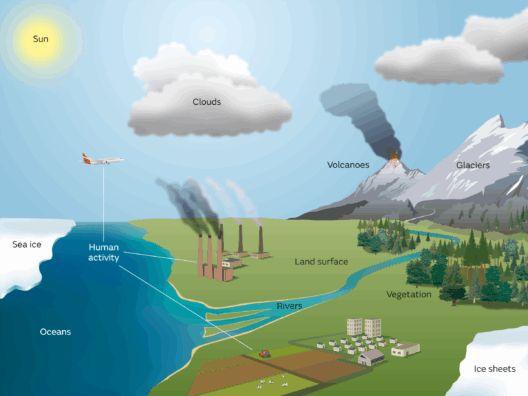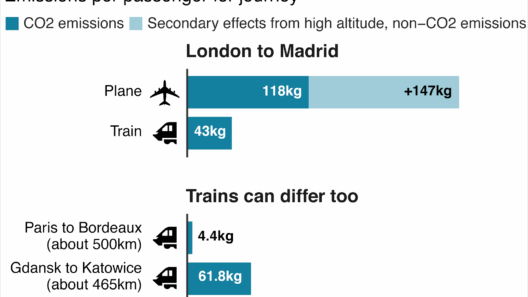As humanity grapples with the dire consequences of climate change and environmental degradation, the specter of nuclear weapons looms large. The potential for nuclear war, whether by intentional conflict or catastrophic accident, presents not only immediate threats to human life but also long-term implications for our planet’s climate. Understanding this intersection between nuclear technology and climate science is essential for both policymakers and environmental advocates alike.
In the wake of nuclear detonation, the most immediate impact is the release of vast quantities of energy through nuclear fission. This energy generates a formidable fireball, resulting in extreme heat and widespread destruction in the vicinity. However, the aftermath extends far beyond mere urban destruction. The subsequent firestorms can propel immense amounts of soot and particulates into the stratosphere. This phenomenon, often referred to as “nuclear winter,” could catalyze profound climatic alterations.
One of the central hypotheses surrounding nuclear winter posits that these particulate matter can create a thick veil in the atmosphere, categorized as soot, effectively blocking sunlight. This dramatic reduction in solar radiation could lead to plummeting surface temperatures across vast regions of the globe. Such a scenario posits an alarming prospect: global mean temperatures could drop by as much as 10 degrees Celsius or more following a large-scale nuclear exchange. This is not a trivial matter; rather, it poses an existential threat to agricultural viability, threatening food security and precipitating widespread famine.
The concept of a “nuclear winter” is buttressed by both modeling studies and historical analysis. Research indicates that even a limited nuclear exchange—think of a regional conflict involving just a few nuclear weapons—could nonetheless have disastrous effects on climate. Simulations suggest that the combustion of vegetation and urban materials in such a conflict could emit enough soot to incite short-term climate shifts, characterized by colder temperatures and altered precipitation patterns.
Moreover, the atmospheric chemistry surrounding urban firestorms in nuclear detonations can lead to the formation of ozone-depleting substances. The ramifications of ozone layer depletion are extensive. The ozone layer serves as a protective shield, absorbing the majority of the sun’s harmful ultraviolet radiation. Its degradation results in enhanced UV radiation reaching the Earth’s surface, with profound implications for human health and ecosystems. Increased UV exposure is linked to higher incidences of skin cancer, cataracts, and immune system suppression, as well as detrimental effects on phytoplankton, the backbone of marine ecosystems.
Another critical dimension of the climate-nuclear interaction involves the prolonged socio-political ramifications that might stem from a nuclear conflict. The destabilization following such an event could impede global cooperation on addressing climate change. Resources could become scarce, and nations might prioritize security over sustainability. In an era where collaborative efforts are urgently needed to mitigate climate change, any disruption in international relations could stymie progress towards crucial climate treaties, technological innovations, and financial investments in renewable infrastructure.
On a longer time scale, nuclear fallout also poses significant challenges to the environment. Radioactive particles can settle on land and in ocean systems, contaminating soils and water sources for decades or even longer. This contamination can devastate local ecosystems, disrupting food chains and leading to biodiversity losses. The ecological repercussions may take generations to reverse, if they are reversible at all. Ecosystems afflicted by radiation can exhibit altered dynamics, shuffle species interactions, and propel some species toward extinction while favoring others.
In parallel to the devastating local effects, nuclear detonations can also have far-reaching effects on climate inertia. The changes to atmospheric and oceanic systems could alter weather patterns and precipitation cycles globally. For instance, the potential for altered monsoon patterns could induce severe droughts in certain regions while causing floods in others. These disruptions could further amplify the challenges that societies face as they attempt to adapt to ongoing climate change.
It is essential to recognize that the intersection between nuclear weapons and climate science is not merely theoretical; it serves as a stark reminder of the interconnectedness of human decision-making and environmental outcomes. The scientific community underscores the importance of reducing the nuclear arsenal and investing in non-proliferation efforts as a part of a holistic strategy to combat climate destabilization. The imperative here is clear: we must advocate for disarmament while concurrently pushing for sustainable environmental practices.
Ultimately, the threat posed by nuclear weapons transcends national borders and humanitarian concerns; it directly implicates the ongoing battle against climate change. By understanding the multifaceted effects of nuclear detonations on climate systems—ranging from immediate atmospheric changes to long-term ecological impacts—societies can better navigate policy decisions that prioritize both disarmament and environmental stewardship. The science is unequivocal: in a world increasingly vulnerable to climate instability, the continued existence of nuclear arsenals further exacerbates risks we cannot afford to ignore.
In conclusion, the dialogue surrounding nuclear weapons must incorporate a pragmatic assessment of their potential implications for our planet’s climate. With pressing environmental crises at hand, fostering a comprehensive and informed discussion on nuclear disarmament and climate action is critical for securing a sustainable future.




